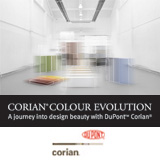'21st Century Architecture. Introducing Non-Design and Quiet Architecture' by Rabih Hage
Thoughts on Architecture
My definition of good architecture is the skill of intelligently and creatively using existing structures; enhancing and transforming them to fit new functionalities and ways of living. This is progressive architecture; architecture that will preserve the environment, increase energy efficiency, reduce waste and minimise unnecessary impact on the urban fabric and our planet.
Of course there continues to be a need for new buildings – after all the global population is ever increasing and there are housing shortages in many economies. We cannot all be accommodated in revitalised structures. But when we have the choice, the existing must be reused.
Well-designed new buildings can mark history, and others may become instant icons of contemporary architecture. Architecture has been used by rulers and powerful sponsors to make a statement. Examples of good and bad ones are many. Emerging economies and expanding global corporations have taken on this role.
Whoever commissions a piece of architecture, building new is not necessarily making a positive statement; it is sometimes synonymous with an egocentric desire to stamp individual style on the environment or create a personal monument to creativity. This is the architecture that shouts what could have been whispered, and tears down what could have been preserved and improved. Why demolish and rebuild? Why add more stuff to the world?
Good buildings have survived across the centuries, outliving us to create enduring homes and places with extraordinary character and beauty. Today, the average life of buildings in the Western hemisphere is a little over 90 years. Despite modern technology, advanced building material and generations of uninterrupted construction experience, we are now likely to outlive our own buildings.
As architects, we are building the aesthetic of today and the future. We must be progressive in our thinking, and bold in our approach. My practice, Rabih Hage Architects, is exploring a new methodology that will avoid wiping out past layers of buildings, culture, history and lives. Creating new shapes is fine when it is justified, and if it is done well it is also good architecture, but improving existing buildings and extending their lives is a bigger, better and much more important challenge. This is the sophisticated and difficult art of non-design.
But what if there is nothing there? What should you do with an empty site? Surely this is the place for a well-designed new building. I believe that there is no such thing as an empty site. There is always something to link a new building to: the landscape, the urban fabric, the geology or the culture. Most of the new build projects in emerging countries or new urban quarters are a “copy and paste” of what has been done elsewhere, rather than a design emanating from the site, its surroundings and local culture.
I am opposed to parachuting a building in and creating a pastiche of grandness. Non-design is the rejection of overly-designed architecture and spaces that try too hard. Non-design is perfectly in line with the 20th century theory of “form follows function” and minimal intervention as good architecture.
It is much easier to create new structures and make bold statements than it is to create new architecture out of existing buildings. Being subtle, thoughtful and integrating good design into a built envelope is 21st Century architecture. I call this Quiet Architecture.
A superb example of Quiet Architecture is the Stirling Prize winning transformation, by Witherford Watson Mann, of the ruins of Astley Castle into a beautiful, poetic and functional building. A different example is the transformation, by my own practice, of an old building at Kings Cross into the Rough Luxe Hotel, mixing old and new to restore the building and reveal the original distressed walls as a background for colour, fabric, art and hospitality. We have kept the existing layers untouched, uncovered old ones like urban archaeologists; painstakingly “excavating” the building to reveal its beauty, and as social analysts; adding a subtle layer of functionality and contemporary living. These two projects, the fruits of Quiet Architecture, are examples of non-design for the sake of good architecture and the revival of these centuries’ old buildings into the 21st Century.
Non design is a new professional behaviour. Like a creative anthropologist, an architect should design with the social profile of the users in mind as well as the existing story of the site keeping both at the heart of the project. Quiet Architecture is a sensitive intervention, respecting the extant and including new scenarios of lives, playing with the existing building material, voids and the surrounding air and reinterpreting buildings.
21st Century Architecture should be Quiet Architecture that is developed patiently over the years and transmitted beyond generations. Good architecture sits beyond trends and movements.
Of course good architecture also makes commercial sense. Non-design and Quiet Architecture meet this criterion as revitalising existing stock is almost always more commercially viable than building anew when the bigger picture is taken into account.
The best 21st Century architects will put a subtle imprint on buildings, like a message in a bottle or a time capsule. They will assert an opinion and an architectural presence at the same time as respecting the marks and aesthetic of what has gone before. Simply by respecting the work of past generations as well as contemporary sensitivities we will avoid collective social amnesia through purposeful architecture. It is not conservation that will achieve this, it is Quiet Architecture. Quiet Architecture passes a building to the future with renewed life and relevance.























